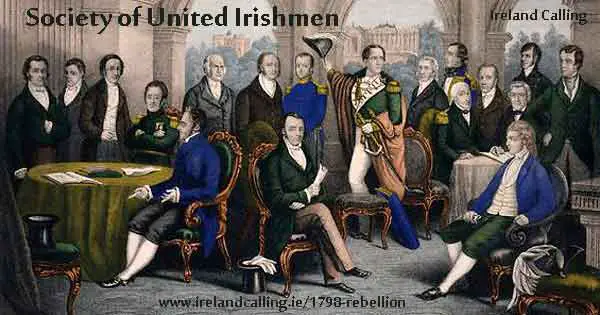The 1798 Rebellion was a major step towards Ireland achieving its status as an independent republic. Although, the country remained under British rule for another hundreds years and more, the 1798 Rebellion set the precedent for Irish nationalists to rise up and fight for their country’s freedom.
Here are some of the essential facts you need to know about the 1798 Rebellion.
- The rebellion was fought by the United Irishmen. It had initially been a political movement to improve the rights of Irish people and unite Catholics and Protestants. However, it was forced underground after it faced hostility for openly supporting France in the war against Britain. The organisation was spread across the country, but the various divisions were not under a strong command structure and operated as independent units.
* * *
- The United Irishmen had an agreed date on which the rebellion would begin. However, the Dublin rebels pulled out at the last minute because they wanted to wait for military support from France. The rebel groups in the surrounding counties went ahead, but were quickly quashed by the British Army, who were supposed to be struggling to maintain order in Dublin.
* * *

* * *
- Numerous United Irishmen leaders were captured and executed as a message to others to end the rebellion.
* * *
- One of the major rebel victories came at the Battle of Oulart in Wexford. Led by Father Murphy, the Wexford rebels outmanoeuvred and slaughtered more than 100 British soldiers. The following day the rebels drove a herd of cattle through Wexford and took control of the town in the panic and disarray that followed.
* * *
- More than 300 United Irishmen were slaughtered in the Gibbet Rath Massacre on the Curragh of Kildare. They had negotiated a peaceful surrender with General Gerard Lake after fighting several unsuccessful battles. The rebel leaders and Lake had agreed that they would lay down their arms and no harm would come to them. However, another unit of British troops, that was not aware of the planned surrender, attacked the unarmed rebels from the other side and killed hundreds of them.
* * *
- The Battle of New Ross in County Wexford saw the loss of more than 2,000 Irish rebels. They attacked the town and fought for hours before British Army reinforcements eventually regained control. Those rebels that had not managed to escape were beaten, tortured and killed. In response, the Wexford rebels killed more than 100 Protestant civilians, including women and children, by locking them in a barn and setting fire to it.
* * *
- While the rebels in the south were frequently in battles with the British Army, the north was quiet. A meeting was called and northern leaders were removed. They then began to engage in various battles in the north of the country, but achieved little success.
* * *
- One of the final battles of the rebellion took place at Vinegar Hill in County Wexford. It is estimated that up to 1,000 rebels were killed, and although many escaped, they split into smaller groups and further attacks were never with the same ferocity. The British eventually crushed the rebellion completely.
* * *
- Almost all the United Irishmen leaders that were not killed in battles during the rebellion were executed after being captured.
1798-rebellion.html”]